Prisoner of War Camp Number 25: A Reflection on History in Lambourn
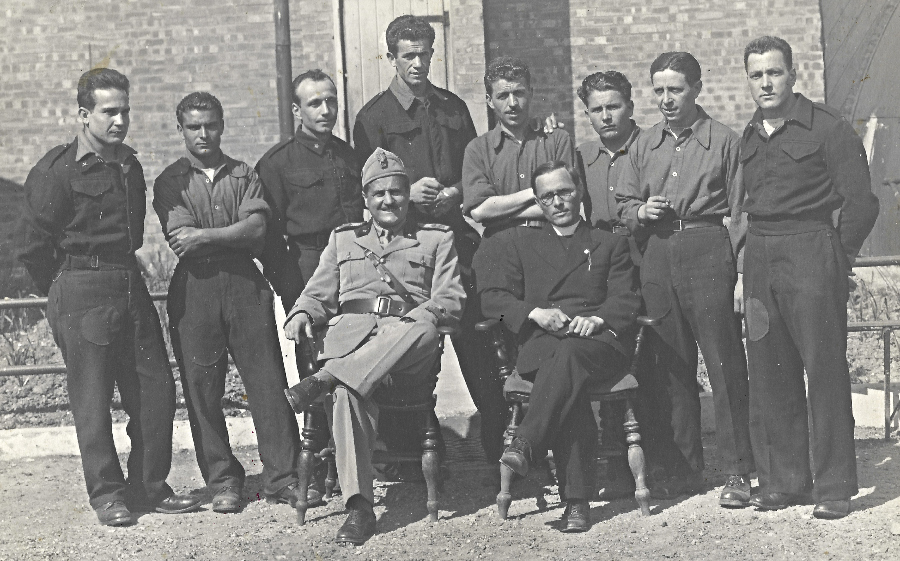
Aldo is the tall gentleman standing in the back row. (Picture supplied by Giancarlo Appetecchi)
Lambourn holds within its past a lesser-known yet significant chapter tied to World War II – Prisoner of War (POW) Camp Number 25, located at Lodge Farm. Established during the war, this camp housed prisoners from several nations, including Italians and Germans.
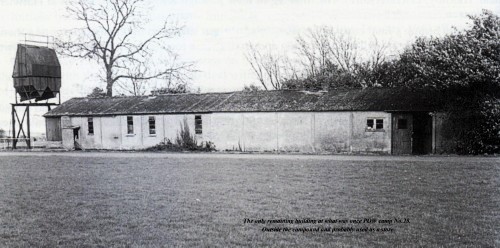
Among the many men who passed through the camp was Aldo, the father of Giancarlo Appetecchi, who recently contacted lambourn.org with a picture and a postcard his father sent home during his time at POW25. The correspondence was a heartwarming reminder of how, despite the harshness of war, life within the camp carried moments of humanity and connection. The card, stamped with the prison camp number, signified one of the few ways these prisoners could maintain a link with their loved ones back home.
Aldo recalled his time at the camp fondly, despite the circumstances. This may seem surprising given the grim reputation many prisoner of war camps held during the war, but POW25 was somewhat different. Accounts from former prisoners suggest that life in POW25 was bearable, with prisoners treated well and provided with opportunities to engage in agricultural work and other activities. Many even established friendships with local villagers, a testament to the spirit of resilience and camaraderie that can arise even in times of great conflict.
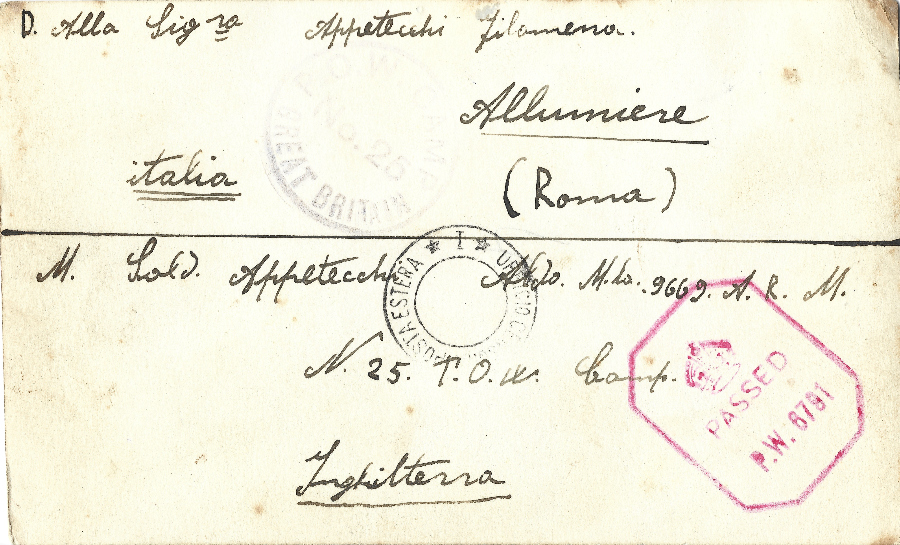
Giancarlo remembers:
“My father was captured in Tobruk under circumstances reminiscent of an Alberto Sordi film. After an advance, his unit was forced to withdraw from Sidi el Barrani and make their way back to Tobruk on foot, trekking through the desert for days. However, the British, being motorised, had already reached Tobruk by the time they arrived. I believe this took place during Operation Compass. My father was eventually brought to England after a long journey, travelling aboard a ship called the Strathallan. During the voyage, he worked as a nurse, a profession he continued throughout his life. Even as a prisoner, he was entrusted with a bicycle and visited English homes to administer medications and injections.”
Giancarlo has kept some items from his father as a reminder of the time including a cigarette case made of aluminium at the camp and the thermometer his father used. The scale is in Farenheit which, Giancarlo jokes, is not much use in Italy!
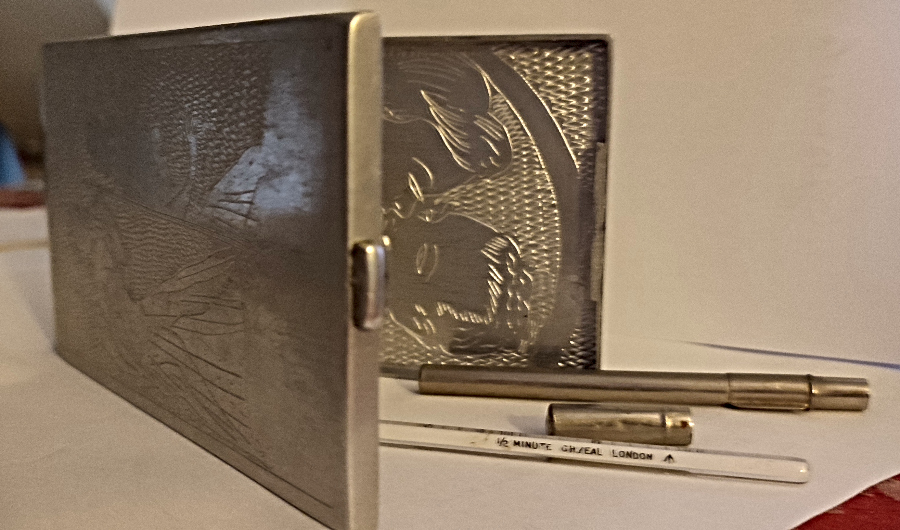
The presence of POW25 had a notable impact on the local community as well. Some prisoners worked on nearby farms, including Lodge Farm itself, and interacted with local residents, forming bonds that sometimes transcended the war. It wasn’t uncommon for the prisoners to be remembered fondly by the villagers, who recognised the humanity of these men, despite being on opposing sides of the conflict.
The significance of this camp to the history of Lambourn is underscored by the memories shared by individuals like Giancarlo Appetecchi. His father’s positive recollection of his time at POW25 serves as a reminder that even in war, there are moments of peace, understanding, and mutual respect.
For further insight into the history of POW Camp Number 25 and its place in Lambourn during World War II, you can visit lambourn.org, where you can view the image and letter shared by Giancarlo Appetecchi, as well as explore more stories from that period.
Lambourn.org has translated this article into Italian:
Campo di Prigionia Numero 25: Una Riflessione sulla Storia di Lambourn

Lambourn custodisce un capitolo meno conosciuto ma significativo legato alla Seconda Guerra Mondiale: il Campo di Prigionia (POW) Numero 25, situato presso Lodge Farm. Istituito durante la guerra, questo campo ospitava prigionieri di diverse nazioni, tra cui italiani e tedeschi.
Tra i molti uomini che passarono per il campo c’era Aldo, il padre di Giancarlo Appetecchi, che ha recentemente contattato lambourn.org con una foto e una cartolina che suo padre inviò a casa durante il suo tempo nel Campo POW25. La corrispondenza è stato un caloroso promemoria di come, nonostante la durezza della guerra, la vita all’interno del campo potesse conservare momenti di umanità e connessione. La cartolina, timbrata con il numero del campo di prigionia, rappresentava uno dei pochi modi con cui questi prigionieri potevano mantenere un legame con i loro cari a casa.
Aldo ricordava il suo tempo nel campo con affetto, nonostante le circostanze. Questo può sembrare sorprendente, data la reputazione cupa di molti campi di prigionia durante la guerra, ma il POW25 era in qualche modo diverso. Le testimonianze di ex prigionieri suggeriscono che la vita nel POW25 fosse sopportabile: i prigionieri venivano trattati bene e avevano l’opportunità di lavorare in agricoltura e svolgere altre attività. Molti persino instaurarono amicizie con gli abitanti del villaggio, un segno dello spirito di resilienza e di cameratismo che può emergere anche nei tempi di grande conflitto.

Giancarlo ricorda:
“Mio padre fu catturato a Tobruk in circostanze che ricordano un film di Alberto Sordi. Dopo un’avanzata, la sua unità fu costretta a ritirarsi da Sidi el Barrani e a tornare a piedi a Tobruk, camminando per giorni nel deserto. Tuttavia, i britannici, essendo motorizzati, erano già arrivati a Tobruk quando loro giunsero. Credo che ciò sia avvenuto durante l’Operazione Compass. Mio padre fu infine portato in Inghilterra dopo un lungo viaggio, navigando a bordo di una nave chiamata Strathallan. Durante la traversata lavorò come infermiere, una professione che continuò per tutta la vita. Anche da prigioniero, gli fu affidata una bicicletta e visitava le case inglesi per somministrare farmaci e iniezioni.”
La presenza del POW25 ebbe anche un impatto notevole sulla comunità locale. Alcuni prigionieri lavorarono nelle fattorie vicine, tra cui Lodge Farm stessa, e interagirono con i residenti locali, formando legami che talvolta trascendevano la guerra. Non era raro che i prigionieri fossero ricordati con affetto dai paesani, che riconoscevano l’umanità di questi uomini, nonostante fossero su fronti opposti del conflitto.
L’importanza di questo campo per la storia di Lambourn è evidenziata dai ricordi condivisi da persone come Giancarlo Appetecchi. Il ricordo positivo di suo padre del tempo trascorso al POW25 è un promemoria che, anche in guerra, ci sono momenti di pace, comprensione e rispetto reciproco.
Per ulteriori approfondimenti sulla storia del Campo di Prigionia Numero 25 e sul suo ruolo a Lambourn durante la Seconda Guerra Mondiale, potete visitare lambourn.org, dove è possibile vedere l’immagine e la lettera condivisa da Giancarlo Appetecchi, oltre a esplorare altre storie di quel periodo.
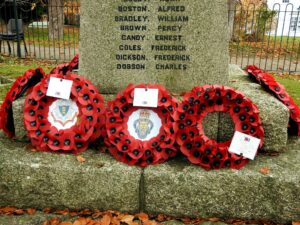

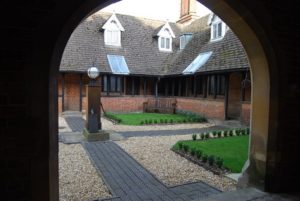

Hi Liz and Christian, just read your article about the P.O.W. camp near Lambourn. My name is Eric (George) Davies- my mother, Ellen Fay Davies and I lived with her parents Charles and Mary Cooling in Lambourn House from about 1943 to ’48. We moved to a house that is on the Baydon road, built by Jim Casterton ( if I remember correctly). It was named “Middle Hill” and not far out of the village. I can remember german P.O.W.’s marching down the road and peeling off to work for various householders in the village. We had 2 who workrd for us and one used to look “out for” look after me. We fed them and they were very good workers. At Christmas time they made presents for us and I recall them repairing some dining table chairs for us. My grandfather, Charles Cooling, told me they didn’t want to go back to Germany, but wanted to bring their families or relatives to live in Lambourn. I don’t know if this ever eventuated. I have a lot more to my memories, but will stop at around 1949/50. Regards, George Davies.
Hello George/Eric. Thank you for getting in touch and for sharing these lovely memories, it is always a pleasure to hear these and keeps our history alive. I remember the name of Jim Casterton..have no idea why! and trying to place ‘Middle Hill’ (it is only Windmill Hill that comes to mind at present) Best regards Liz
Just read your comments about Jim Casterton. He was my uncle. He was indeed a builder and had a yard on the Baydon Road along which he built several houses including his own bungalow, no 21, which still stands today. He was in business with racehorse trainer Ossie Bell, a sleeping partner who towards the end of the 1950’s decided to withdraw his money. This spelled the end for my uncle who had to close down and subsequently took a job as clerk of works at Harwell. He moved to Oxford, survived lung cancer but eventually died of a heart attack at the age of 67.
Hello George, yes, I know the one you refer to. Very interesting about his connection with Ossie Bell (my grand father worked at his yard) I noted that Jim was also in the Lambourn Choir as a boy. Very sad that he died so young. Thank you for sharing your memories with us, always a pleasure hearing them. Regards Liz
I’m looking for same information is there any connection from camp 621 Ogborne mazey or any of the Italian prisoners worked d close with the camp at lodge farm?